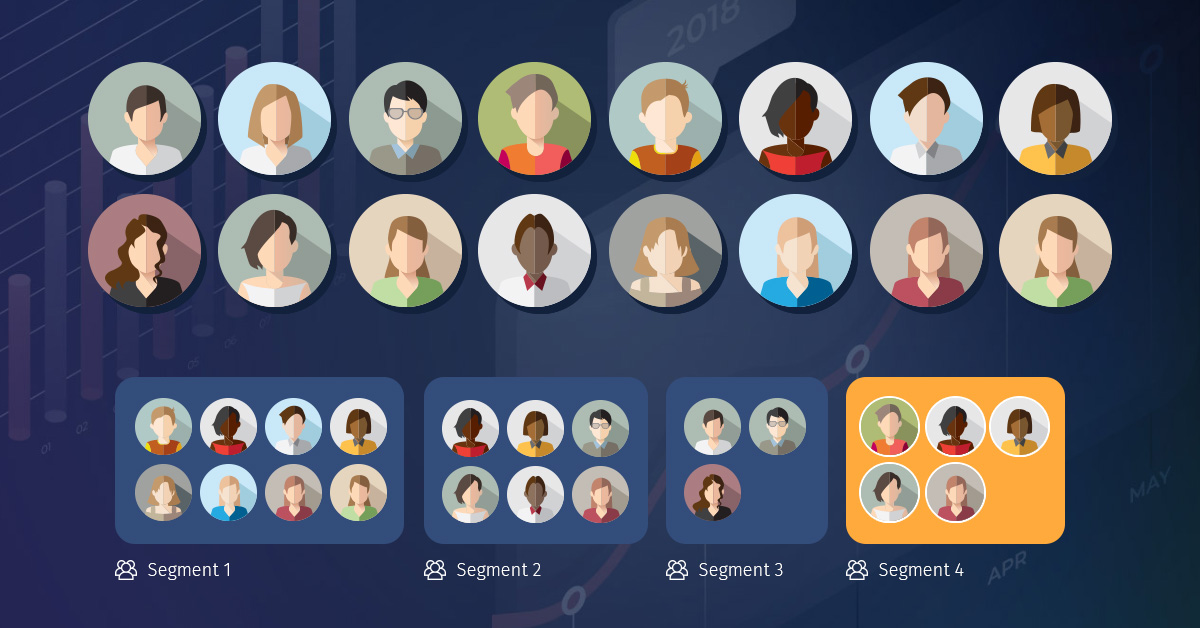

Have you ever downloaded a giant spreadsheet with an overwhelming amount of data? How about a copy of your cell phone bill, calls & texts included? Ever made the mistake of saying “yes” to the receipt at CVS? There’s only so much data you can process at one time, and then you have to start breaking it up into chunks, and same is true for your Google Analytics traffic.
When it comes to Google Analytics, you’re receiving data from multiple channels about the activity on your dealership’s website. If you could group similar users based on specific criteria and parse out that data, it would make things much easier to decipher.
And you’re in luck because, of course, Google Analytics segments does just that!
Using segments, you can view all Google Analytics’ standard & custom reports for users and visits that match specific criteria. Basically, Google Analytics segments are specific subsets of your analytics data so you can break down the traffic coming from your website into more manageable datasets. One advantage that comes to mind is the ability to isolate specific subsets to analyze and respond to business trends. For example, out of your entire set of website visitors, you can segment users from a specific geographic region or users who purchased a specific product.
In other words, it’s targeting made more efficient. Imagine how much easier it would be to capture subprime shoppers if you could isolate them and serve up some compelling display or inventory-based ads?
Now, it doesn’t stop there, Google provides a variety of segment types. There are 22 built-in segments from Google and an Analytics Customer Solutions Gallery, where you can choose from a wider variety of ready-made segments if you didn’t like any of the built-in ones.
Segments include one or more filter that isolate subsets of users, sessions, and hits. Here’s the breakdown:
Subsets users: Segmenting users who have previously purchased a product
Subsets of sessions: Segmenting all sessions where a purchase occurred
Subsets of hits: Any interaction including page views, events and transactions
If you want to tailor a segment specifically to your dealership, then you can custom build them with the segment builder. Here are some examples of segments with individual filters adjusted:
Demographics: Segment users by demographic information including age, gender, language, affinity category, and location.
Technology: Segment users by their operating system, browser, screen resolution, device, and mobile
Behavior: Segment by how often users visit and conduct transactions
Date of First Visit: Segment by when they first visited
Traffic Sources: Segment by how they found you using campaign, medium, source, and keyword fields
You can also edit any custom segment that you have created (either from scratch, by copying an existing segment, by importing, or by receiving a shared segment). Google guides you how to manage, import, edit, share and delete your segments here.
You can also do single or multiple segmentation to compare segment subsets side by side. If you want to examine data in isolation like only mobile users; you would use only a mobile traffic segment. However, if you want to compare different subsets of data like comparing what kind of pages your converters view vs what pages your nonconverters view, you would use multiple segmentation. For example, you could compare subsets of data to the user flow or conversion path of the “average” user.Google guides you how to apply and remove single or multiple segments here.
While we’ve already outlined some of the benefits from segmenting your Google Analytics data, another MAJOR benefit is using them to create audiences. And obviously, those audiences can be used for Google Ad Campaigns.
For example, if you identify a subset of users who viewed the availability of a certain car, you can remarket to them by showing them ads of a price drop in that car (or one like it, if it sells).
In short, using segments gives you the ability to chop up your website traffic in a variety of ways: demographics, social channels, geography, device, and so much more.
The digital advantage this gives your dealership is undeniable. Not only can you start isolating potential customers with more precision, but you can start making business decisions with better data. We’ll talk more about custom audience building in another post, but if you’d like a quick refresher for your PPC guy, here’s something we wrote on the 3 Audiences You Should Already Be Using.


